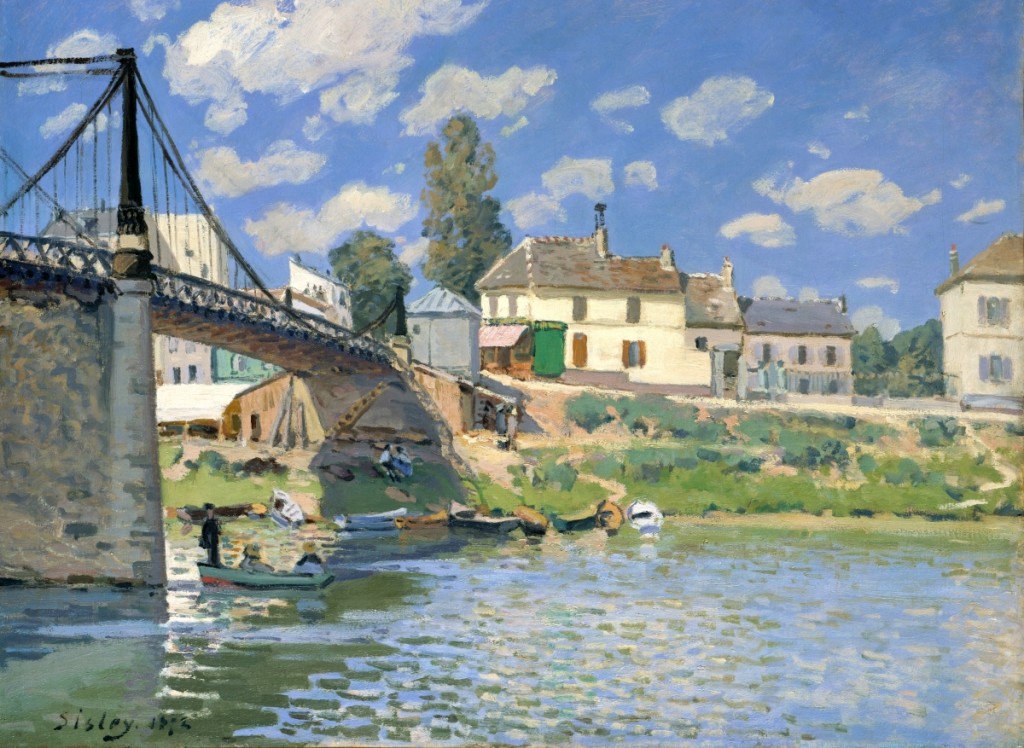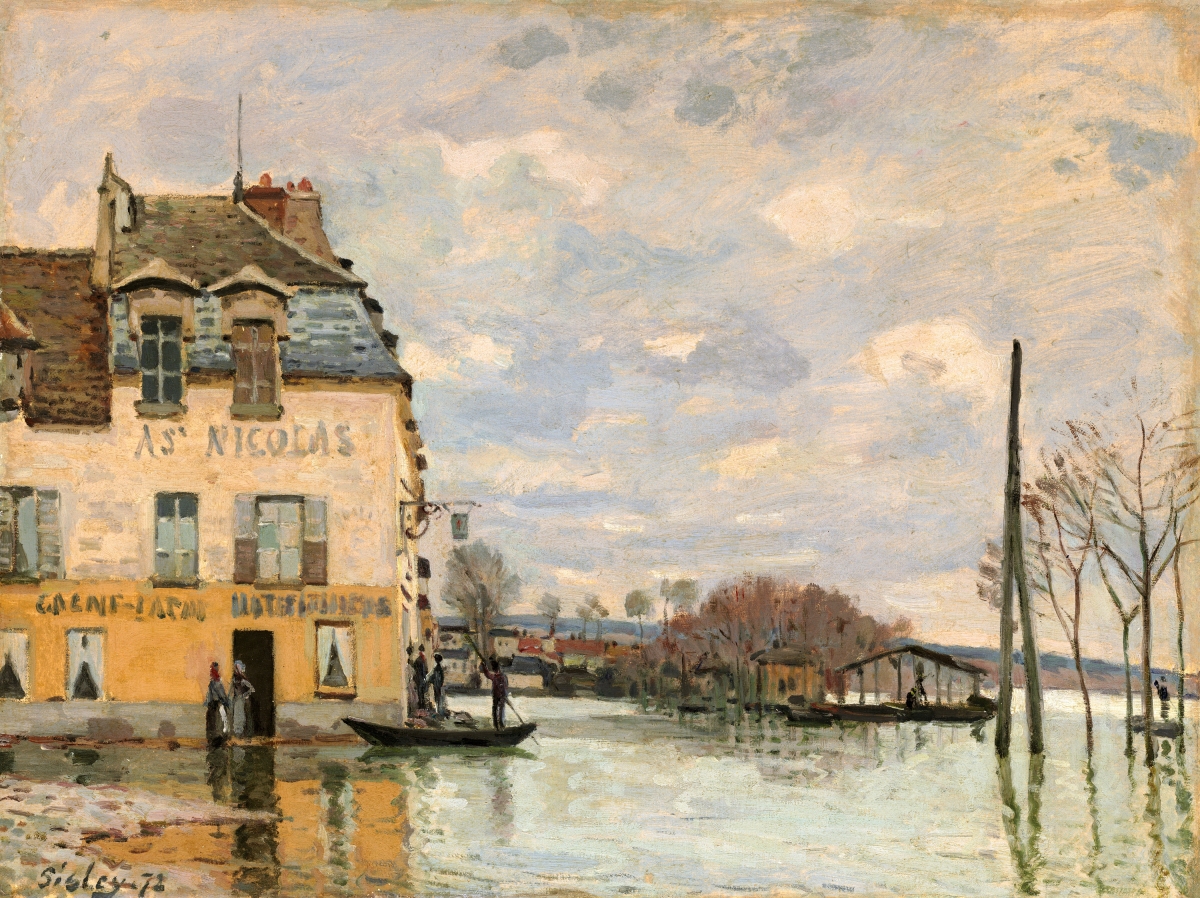
“The Bridge at Villeneuve-la-Garenne,” 1872, oil on canvas. The Metropolitan Museum of Art, gift of Mr and Mrs Henry Ittleson Jr, 1964.
GREENWICH, CONN. – The Bruce Museum and the Hôtel de Caumont Centre d’Art in Aix-en-Provence, France, are mounting a major monographic exhibition of the art of the French Impressionist Alfred Sisley. The first retrospective in more than 20 years of this purest of all the major Impressionists, “Alfred Sisley (1839-1899): Impressionist Master” spotlights about 50 of Sisley’s paintings, which come from private collections and major museums in Europe and North America. The Bruce Museum will premiere the exhibition January 21-May 21, and is the only venue in the United States. The show will then travel to France, where it will be on exhibit from June through October.
Born in Paris to well-to-do British parents, Sisley at first intended to pursue a career in commerce and spent two years in London from 1857 to 1859. During this time, he visited museums, studying both the Old Masters and the great British landscape painters John Constable and J.M.W. Turner. On his return to Paris, he was determined to become a landscape painter and enrolled in Charles Gleyre’s studio, where he met the future Impressionists Claude Monet, Pierre-Auguste Renoir and Frédéric Bazille.

“Flood at Port-Marly,” 1872, oil on canvas. National Gallery of Art, Washington, D.C., collection of Mr and Mrs Paul Mellon.
Initially Sisley worked in the naturalistic landscape tradition of the Barbizon School, but increasingly adopted a proto-Impressionistic style, recording specific locations in a sequence of visual records of different times of the day, weather conditions and seasons. In so doing he charted comprehensively and from multiple points of view the landscapes of his residences in the villages along the Seine west of Paris and beyond the Forest of Fontainebleau at Veneux-Nadon and Moret-sur-Loing.
Sisley was first and foremost a painter of light. He knew how to imbue all of his paintings with it.
One could say that light floods his landscapes, deliciously bathing even the most modest of details.
While his landscapes are generally modest in scale and tonally relatively restrained, the magic with which he was able to capture the effects of the light dancing on water, the brilliance of winter sun on snow and hoar frost, the movement of the wind in trees, the exploration of the depth of a rural scene and the vastness of the skies create compelling works akin to poetry. They demand close, quiet contemplation and their reevaluation is well overdue.
The show is curated by MaryAnne Stevens, independent art historian and curator of the 1992/93 and 2002/03 retrospective exhibitions on the artist. It is accompanied by a fully illustrated catalog published by Editions Hazan. Contributors to this volume, Richard Shone, who wrote a book on the painter, and Kathleen Adler, a Nineteenth Century French specialist, bring new insights that ensure the publication will be an indispensable reference on the artist and his oeuvre.
In addition to the Bruce Museum’s regularly scheduled adult tours, school programs and hands-on in-gallery family activities, special public programming to complement the exhibition in Connecticut will include a graduate student symposium, the only one of its kind in the region, featuring PhD students from leading art history programs who will present their original research on the multifaceted ways in which artists frame nature in their work. The show will also be a focus for visitors of special groups including the museum’s Lifetime of Looking program for guests with memory loss, and the community partner program through Abilis for visitors with developmental disabilities.
The Bruce Museum is at 1 Museum Drive. For information, 203-869-0376 or www.brucemuseum.org.




